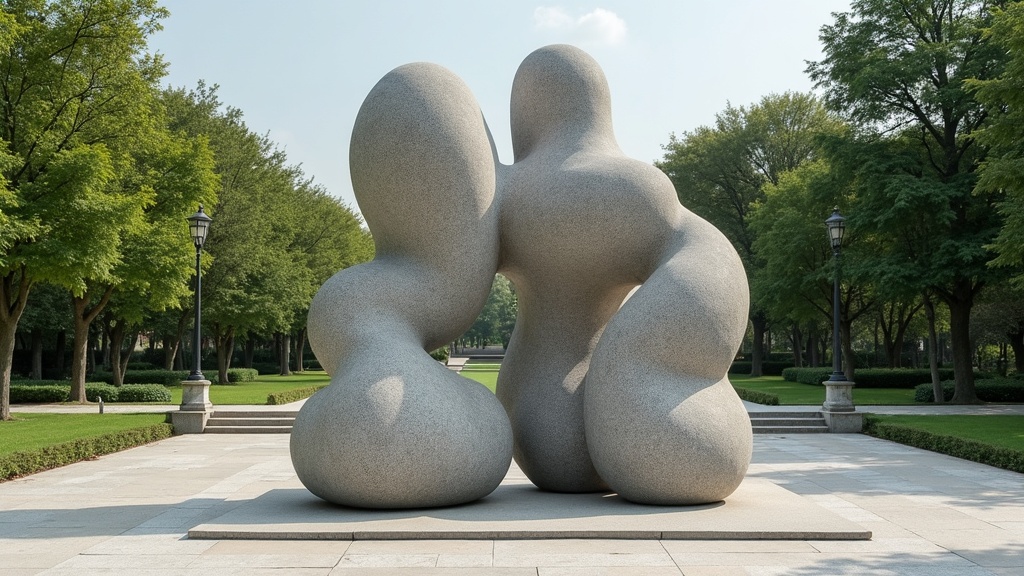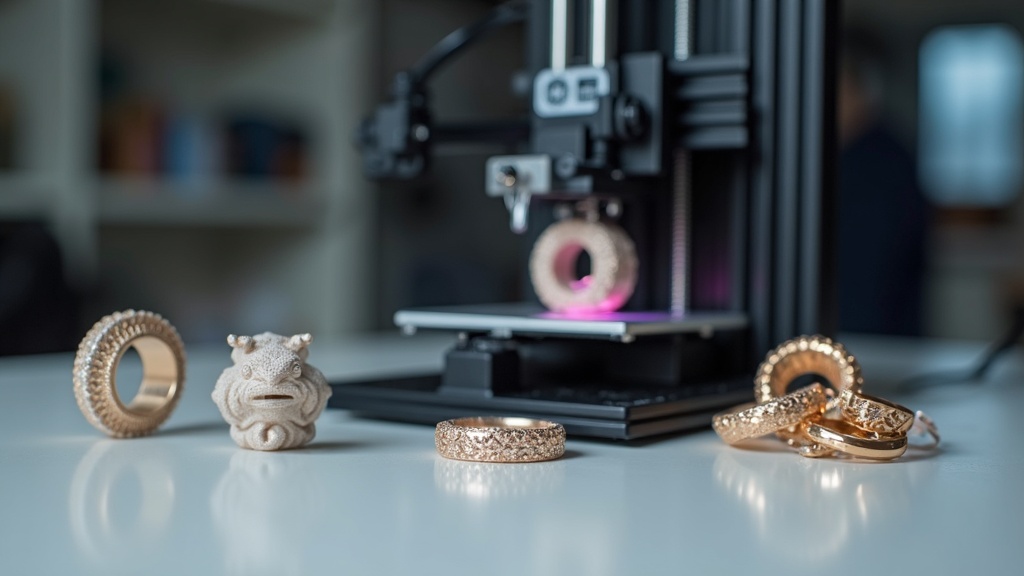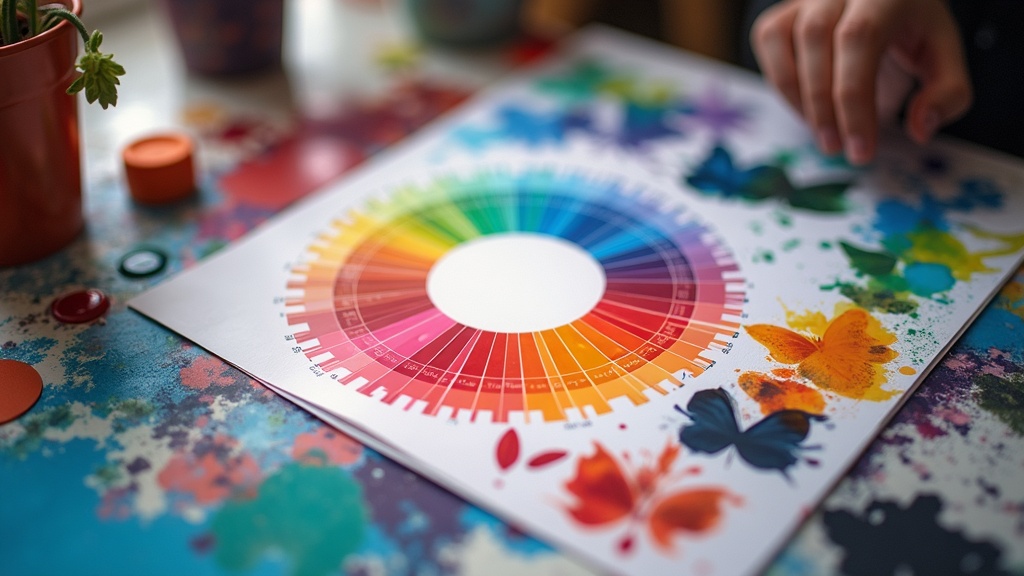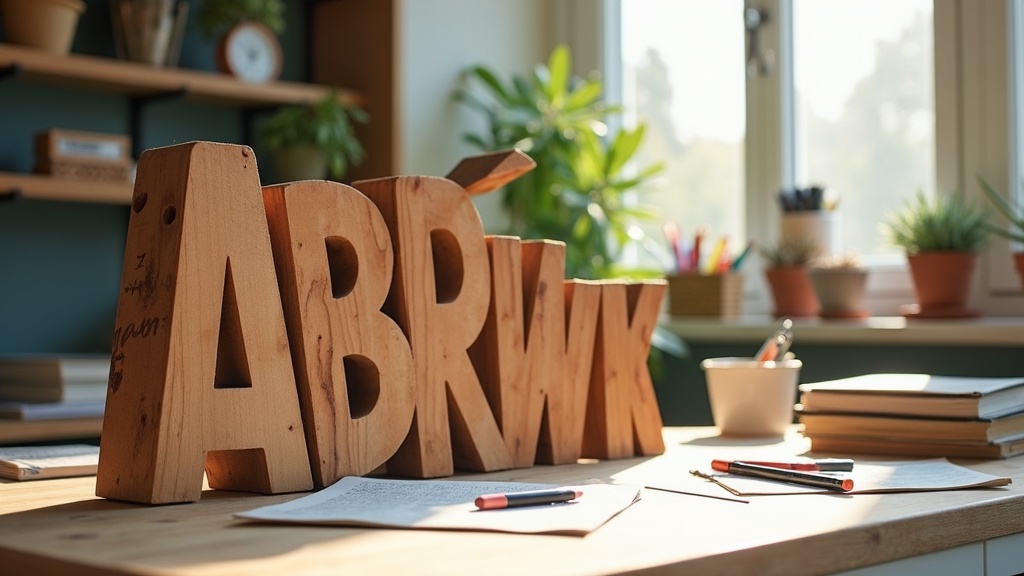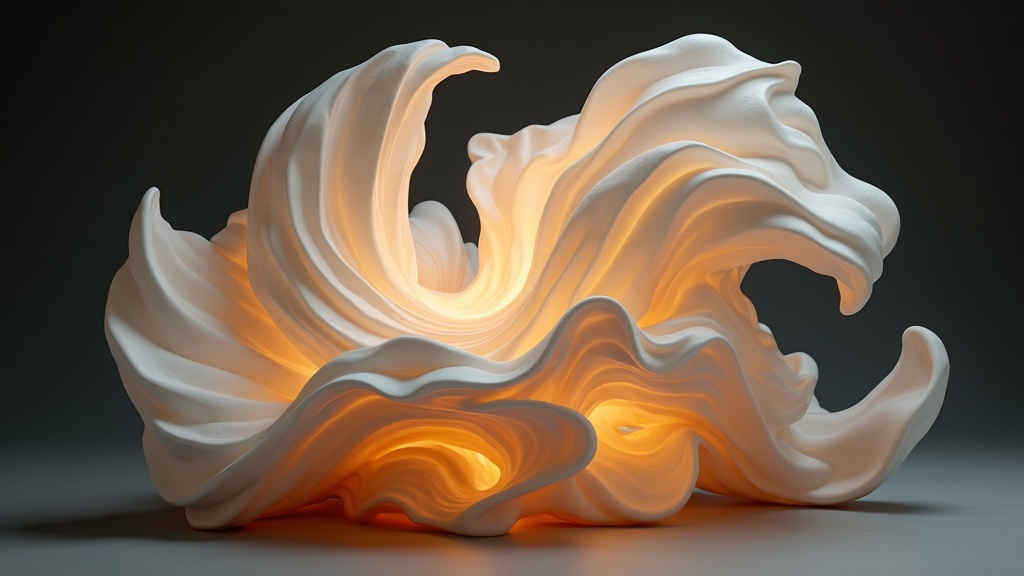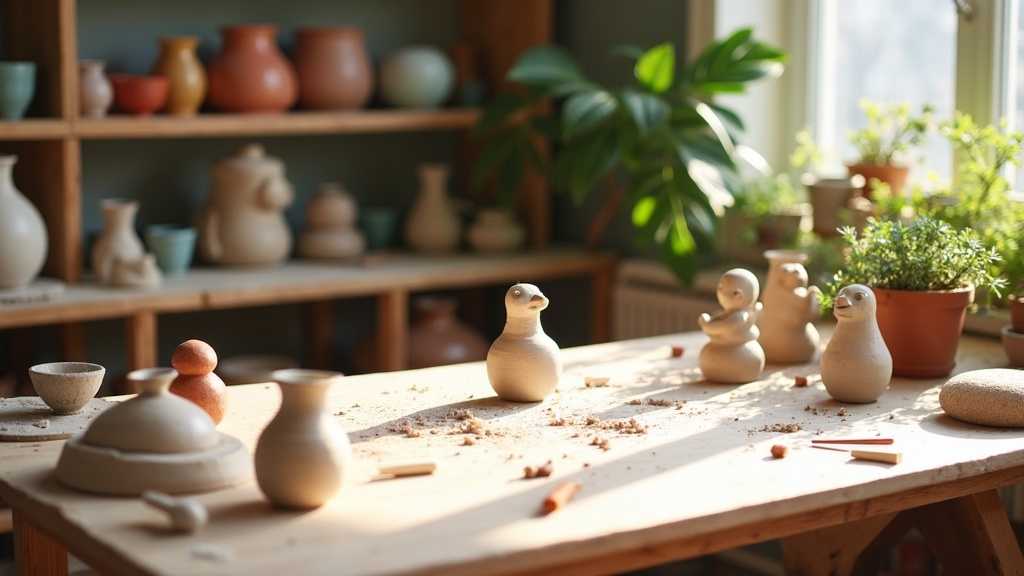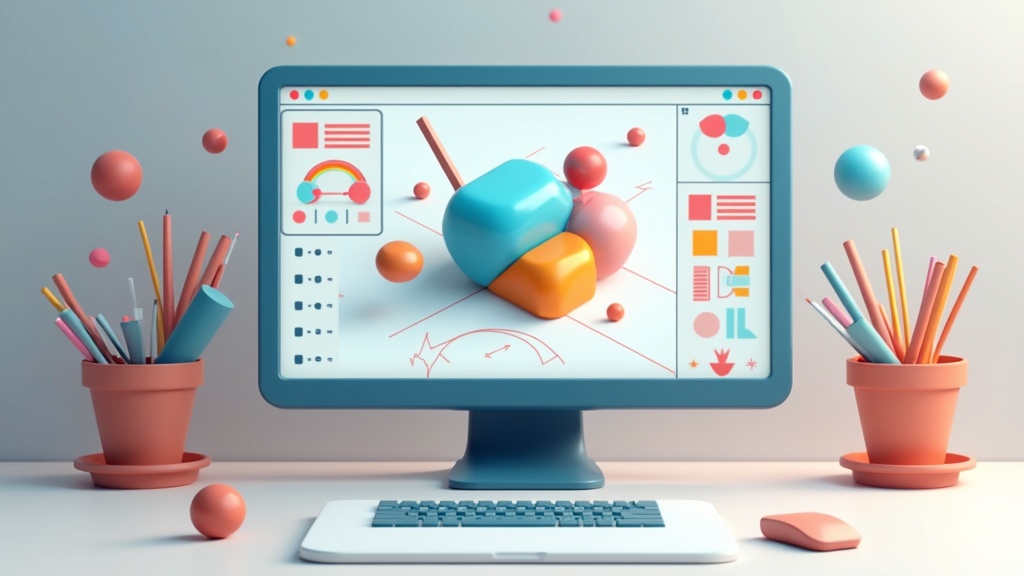Email Marketing For Artists
Email marketing can be a game changer for artists looking to build an audience, sell artwork, and keep fans engaged with their creative adventure. There’s something powerful about connecting directly with people who are genuinely excited about what you make. Since social platforms can be unpredictable and galleries have their limits, an email list gives you more control over how you share updates, launches, and stories.
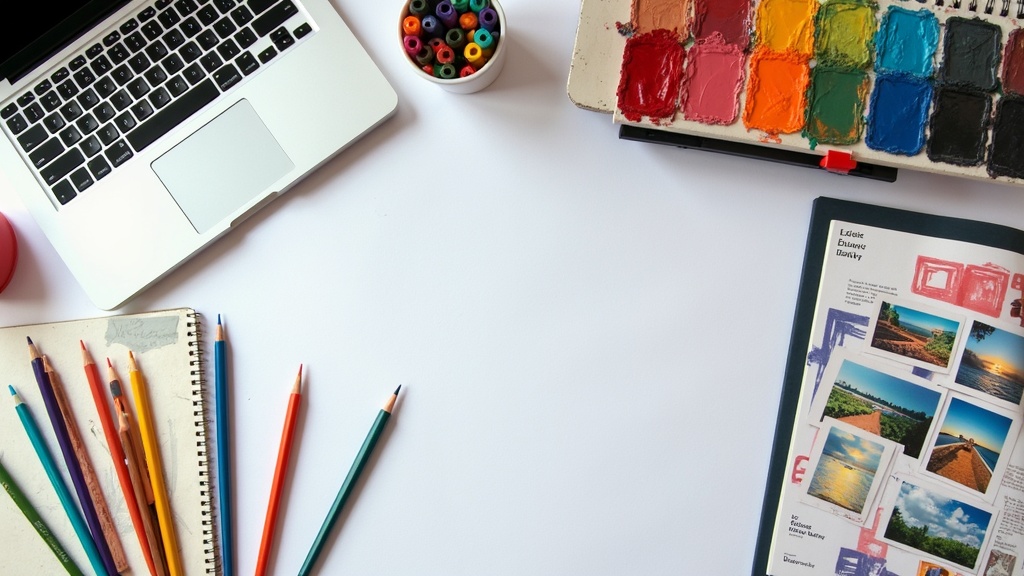
Here’s a little transparency: My website contains affiliate links. This means if you click and make a purchase, we may receive a small commission. Don’t worry, there’s no extra cost to you. It’s a simple way you can support my mission to bring you quality content.
Why Email Marketing Works So Well for Artists
Email stands out as one of those marketing tools that doesn’t rely on complicated algorithms. It’s actually really personal. Unlike social media posts that get buried, your emails land right in someone’s inbox. It’s much easier to build ongoing relationships, announce shows, or even sell pieces without worrying about your post disappearing in someone’s crowded feed.
In recent years, more artists have been moving their focus to direct communication with their audience. As a creative, the ability to share insights into your process and invite subscribers into your world is a unique way to step up your visibility. People love getting early access to new work or hearing about inspiration straight from you, and email is the perfect place for this kind of communication.
Plus, email newsletters tend to have higher engagement rates than most social platform posts. That can turn casual fans into devoted collectors over time.
Building Your Artist Email List from Scratch
The first step in email marketing for artists is starting your own list. If you haven’t set this up yet, it’s never too late. Even if you only have a handful of people at the beginning, a targeted list of people who truly want to follow your adventure is more effective than thousands of unfocused social media followers.
Here are some easy ways to start building your list:
- Feature a Signup Form on Your Website: A simple form on your homepage or portfolio site makes it clear you have a newsletter worth subscribing to. Offer a sneak peek or a behind the scenes look as a thank you.
- Collect Emails at Art Shows: Bring a tablet or notebook to events and invite visitors to join your email list for upcoming news, exclusive events, or discounts.
- Make the Most of Social Media: Share a direct link to your signup form, and explain to your followers what extra value they’ll get from your emails, like first dibs on new art releases or studio sales.
Always ask for permission and be transparent about how you’ll use people’s email addresses. This builds trust and gives your relationship a positive start.
Don’t forget, you can also reach out to those who have purchased from you before and invite them to stay connected through your newsletter. People who’ve bought from you already are more likely to be interested in future updates.
What to Include in Your Art Newsletter
Wondering what to send? Your newsletter can be as creative as your artwork. The best emails give readers a peek into your world, update them on your latest projects, and offer something they can’t get anywhere else.
- Studio Updates: Share photos or short stories about what’s happening in your studio. This invites your readers into the creative process.
- New Work Announcements: Giving subscribers access to your latest pieces before anyone else feels pretty special.
- Behind the Scenes Stories: People love seeing the rough sketches, failed attempts, and progress shots that lead to the finished piece. It’s a great way to build personal connections.
- Upcoming Events: Announce gallery shows, online exhibitions, or art fairs where people can meet you or see your work in person.
- Special Offers: A little thank you goes a long way. Offer exclusive discounts, early bird tickets, or downloadable art for your email subscribers.
Consistency is important. Decide how often you’ll send your emails and stick to it, whether that’s monthly, biweekly, or every time you have fresh work to share.
Quick Guide to Setting Up Your First Art Email Campaign
Getting started with email marketing doesn’t mean you need to spend a lot of time or money. Plenty of userfriendly tools make the process smooth and even a bit fun. Here’s a simple workflow that works for most artists:
- Choose an Email Service Provider (ESP): There are plenty of great, affordable (even free) options like Mailchimp, ConvertKit, or MailerLite. These platforms help you manage your list, design emails, and automatically follow privacy rules.
- Design a Welcome Email: Set up an automated message that new subscribers get right away. Share your story, what people can expect from your emails, and maybe include a small thank you download or preview.
- Draft Your First Campaign: Keep your design clean. Photos of your art, a couple of small stories, links to view or shop, and social media handles are a good start.
- Test and Send: Preview your email, check for typos, make sure all the links work, and send it to yourself first to see what your subscribers will experience. Then hit send!
- Check Your Results: Most email platforms show you how many people opened your message and clicked your links. See what’s working so you can adjust future emails.
These steps are easy to repeat, and over time, you’ll get a sense of what your readers like best. Remember, a little personality goes a long way to keep people reading.
Things to Watch Out for With Email Marketing
Email marketing comes with its own set of challenges, especially if you’re new to it. Here are a few things that can trip up artists, plus some easy ways to handle them:
- Staying Consistent: Sending emails on a set schedule keeps people engaged and helps you build a habit of sharing. Try drafting a batch of emails in one sitting or jot down ideas as they come to you.
- Writer’s Block: Not sure what to say? Keep a list of behind the scenes anecdotes, works in progress shots, or simple updates from your daily routines to pull from when inspiration is low.
- Staying Legal: Make sure you include an easy way to unsubscribe, and never add people to your list without their permission. Following privacy laws (like GDPR or CAN SPAM) builds trust and helps you avoid problems.
- Keeping Emails Out of the Spam Folder: Avoid using too many salesy phrases in your subject line, keep your mailing list updated, and always have permission before sending messages.
Consistency is Key
One of the main challenges for artists is sticking to a regular schedule. Even sending just one email each month helps your art stay at the top of people’s minds. Many artists find that writing a few drafts ahead or batching photos helps keep things on track during busy weeks.
To help with consistency, you might want to set specific calendar reminders or dedicate a time each month just for newsletter prep. When things get busy, having a quick checklist ready can ensure you don’t skip a month unintentionally.
Respecting Subscriber Privacy
Protecting your subscribers’ information is really important. Use your email platform’s built in privacy features, double check your signup process, and keep your lists safe from sharing or public posting. If anyone ever wants off your list, make sure it’s quick and simple for them to opt out.
Trust is key. Don’t share your subscribers’ information with anyone. Make sure to only send what people have agreed to receive, and revisit privacy best practices every now and then as laws and expectations can change.
Advanced Tips for Artists Ready to Take It Up a Notch
Once you’re comfortable with the basics, you can use a few extra tricks to make your email marketing even more effective.
Segment Your List: Some fans might be interested mostly in original paintings, while others want updates on print releases or workshops. Dividing your list lets you send the most relevant content to the right people. Your email platform should help make this easy without any technical hassle.
Include Personal Stories: Adding a quick note on what inspired your latest collection or a funny studio mishap can set your emails apart from typical gallery announcements. Storytelling helps build deeper connections with your subscribers.
Invite Responses: Ask questions, invite feedback, or run a simple survey. When subscribers reply, it signals email platforms that your messages should stay out of spam, and you get useful feedback straight from your fans. You can use these answers to tailor future emails and personalize your messages even more.
Showcase Customer Photos: If collectors share photos of your work in their homes, include them (with permission). This adds social proof and encourages others to share their own finds. Sharing these stories can also inspire other readers to imagine your art in their own spaces.
Analyze Your Performance: Check which type of content gets the most clicks or replies. Over time, tracking engagement and open rates will help you refine your approach. Remember to keep evolving your newsletter based on what’s working best with your audience.
Tools and Resources Every Artist Should Know About
Having the right tools makes email marketing more straightforward. Here are some platforms and resources I recommend checking out:
- Mailchimp: Popular for its free starter tier and great templates that are easy to customize.
- ConvertKit: Popular with creators for its simple automations and clean signup forms.
- MailerLite: Low cost and really userfriendly, plus it has nice drag and drop email designers.
- Figma: For creating simple graphics if you want to jazz up your newsletter with custom banners or section dividers.
There’s no need to overspend here. Most of these platforms give you plenty of options for free or at a low price. Choose one you find the easiest to use and that fits the look you want for your brand.
Some additional helpful resources include YouTube tutorials for whichever ESP you choose, and online communities for artists where people share tips about email platforms. Many platforms also offer their own guides for setting up automations or beautiful templates, which can save you a lot of time as you tweak your design.
Frequently Asked Questions
Here are a few questions I often get from artists thinking about starting email marketing:
How many emails should I send each month?
Most artists find that one or two emails a month is plenty. Aim for consistency over frequency. What matters is that your audience knows what to expect from you.
Do I need a website first?
Having a website with a mailing list signup form can help, but you can start building your list using social media and email platforms even before launching your own site.
What kind of content works best for art newsletters?
Stories, new artwork reveals, and behind the scenes updates get the most engagement. People follow artists for inspiration and personal connection, so sharing a bit of your personality really helps.
How do I keep subscribers interested over time?
Mix things up by sharing process stories, collector highlights, sneak previews, and personal milestones. Don’t be afraid to experiment with new types of content now and then to see what sparks the most enthusiasm.
Wrapping Up: Email Marketing for Artists
Building an art career is about more than creating beautiful work. It’s about building connections. Email marketing gives you a reliable, personal way to invite people into your creative world, turn passersby into collectors, and grow a community around your unique style. Start simple, keep it personal, and watch your audience grow one email at a time. There’s no need to overthink it—just let your passion and personality shine through every message you send.
https://a25c9zqawjfgjwh8x9yyy8jofd.hop.clickbank.net/?&traffic_source=5methods&creative=blog

